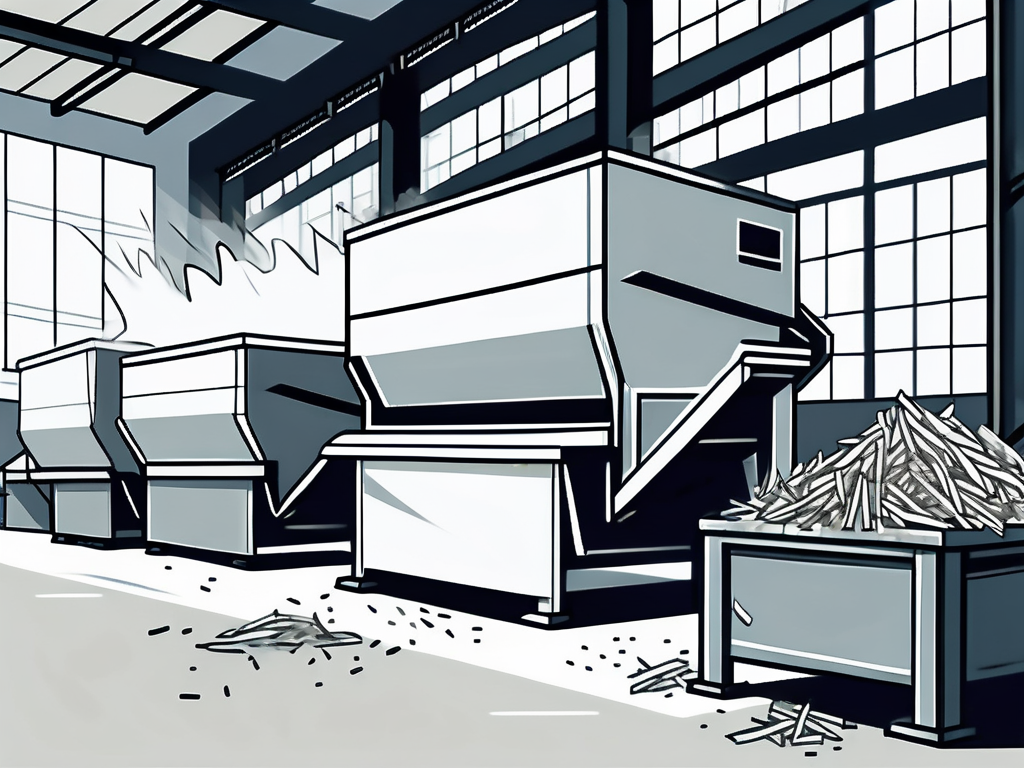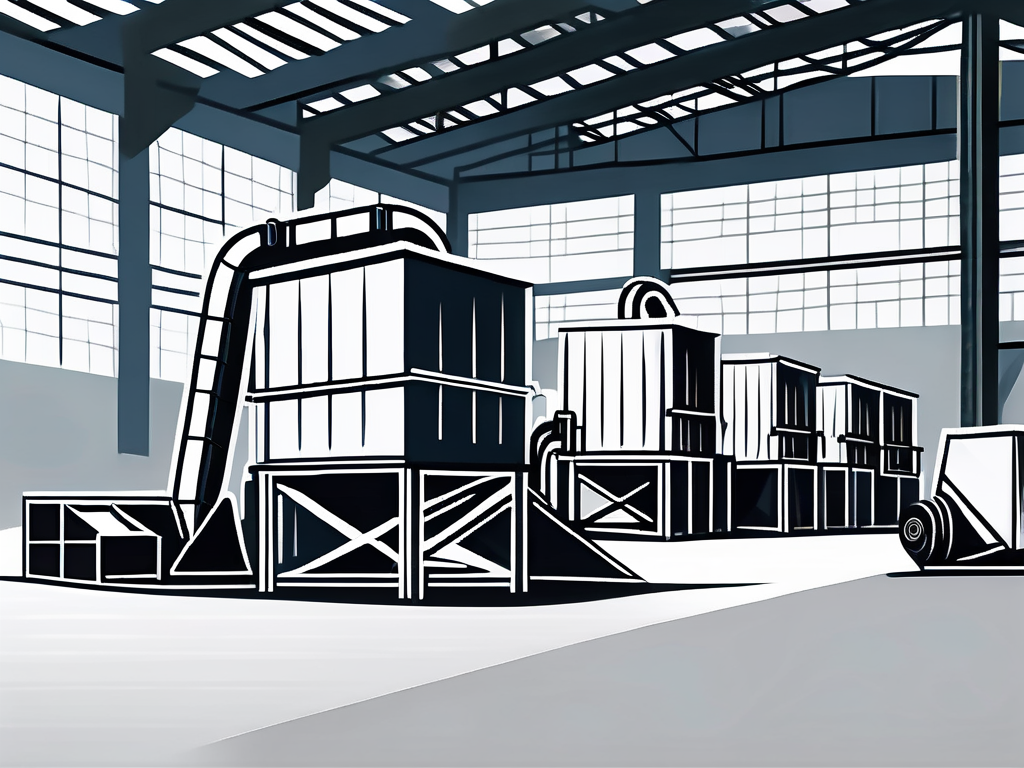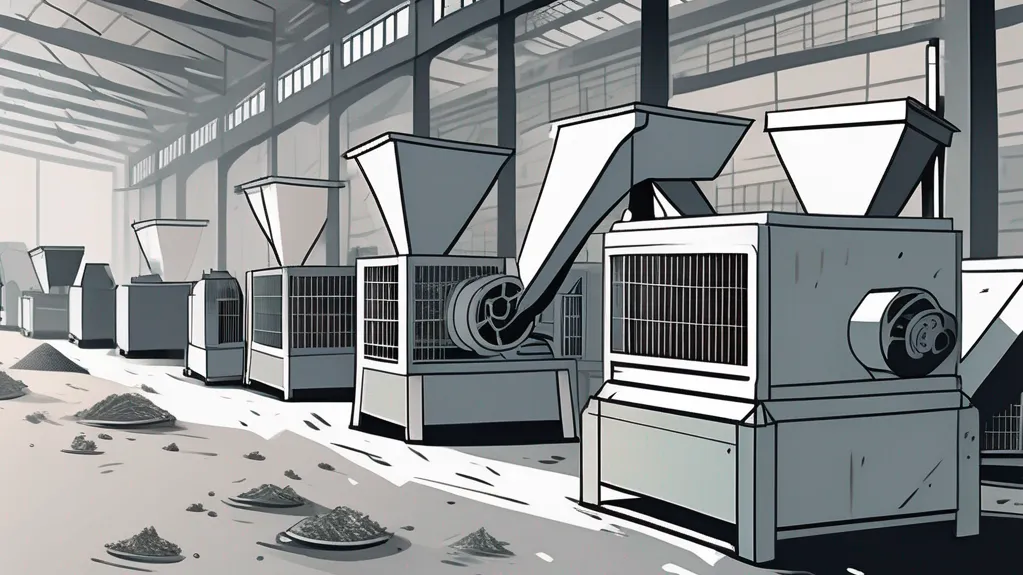In our increasingly fast-paced world, safeguarding sensitive information and managing waste responsibly are paramount. For many businesses, industrial shredders are no longer a luxury but a cornerstone of secure operations and efficient material processing. Perhaps you’re tasked with destroying confidential documents, reducing bulky plastic waste, or securely decommissioning electronic media. Whatever your specific challenge, selecting the right industrial shredder is key. With a dizzying array of options on the market, it’s easy to feel overwhelmed. Fear not! This comprehensive guide is here to simplify the journey, empowering you with the insights to choose the perfect shredder with confidence.
The World of Industrial Shredders Unveiled
Understanding Material Processing Capabilities
Industrial shredders are true workhorses, engineered to break down a diverse range of materials into smaller, more manageable, and often reusable forms. But what can they really handle?
- Paper & Cardboard: From stacks of office documents and outdated financial records to bulky cardboard packaging, these shredders effortlessly convert them into fine strips or cross-cut confetti. This not only ensures irretrievable destruction for sensitive information but also prepares the material for efficient recycling.
- Plastics: A wide variety of plastics, including PET bottles, HDPE containers, PVC pipes, and production scraps, can be processed. Shredders reduce these into consistently sized flakes or granules, ideal for recycling into new products or as an alternative fuel source.
- Metals: Light metals such as aluminium (think cans or profiles) and even some tougher steel components can be tackled. The output is typically smaller, denser chunks or chips, perfect for scrap metal dealers or direct re-melting.
- E-waste: Obsolete computers, hard drives, circuit boards, and other electronic media are common candidates. Shredding not only destroys data-bearing components securely but also liberates valuable materials for recovery.
- Wood & Organic Waste: Some industrial shredders are also adept at processing wood waste (pallets, offcuts) into chips for landscaping, biomass fuel, or composting.
The specific capability will, of course, depend on the shredder’s design and power. For instance, the image below showcases a typical industrial shredder ready to tackle challenging materials.

Decoding Output Options
Once your materials are shredded, what happens next? The desired output often dictates the type of shredder or supplementary equipment needed. Common output objectives include:
- Granulating: This process further reduces shredded particles into fine, uniform granules. This is particularly useful for plastics that are destined for re-extrusion or moulding, or for creating a consistent product for other manufacturing processes.
- Chipping/Flaking: The direct output from many shredders, resulting in small chips or flakes. The size and consistency can often be controlled by screens within the shredder. This is common for wood, plastics, and some metals.
- Baling: For materials like paper, cardboard, plastics, and some light metals, baling is a popular choice. Shredded material is compressed into dense, compact bales. This significantly reduces storage volume and makes transportation to recycling facilities or buyers far more economical.
- Mulching: While sometimes used interchangeably with chipping (especially for organic matter), mulching can also refer to creating a finer, soil-enriching product from garden waste or wood.
Understanding your end-goal for the shredded material is crucial in selecting a shredder that delivers the right output form or can integrate with downstream processing equipment.
Determining the Ideal Capacity
Shredder capacity isn’t just about how much it can shred, but how much it can process efficiently over time, typically measured in kilograms or tonnes per hour. To find your ideal capacity, consider:
- Volume of Material: How much material do you generate daily, weekly, or monthly?
- Peak Loads: Are there specific times when you’ll have significantly more material to process?
- Operating Hours: How many hours per day or week will the shredder be in use?
- Material Type & Density: Denser or tougher materials may process slower than lighter ones.
Choosing a shredder with insufficient capacity leads to bottlenecks and overtime, while an oversized one means unnecessary capital expenditure and potentially higher running costs. A careful assessment of your current and anticipated future needs is key.
Navigating Different Feed Types
Getting material into the shredder efficiently and safely is vital. Common feed types include:
- Manual Feed: Suited for lower volumes or varied materials where an operator directly loads items into the shredder’s hopper. It offers control but can be labour-intensive. Safety interlocks are crucial here.
- Hopper/Gravity Feed: Materials are loaded into a larger hopper, and gravity, sometimes assisted by the shredder’s own mechanism, pulls them into the cutting chamber. Good for batch loading.
- Conveyor Feed: For higher throughput operations, materials are loaded onto a conveyor belt that automatically feeds the shredder. This is ideal for continuous processes and larger, bulkier items. Conveyors can be horizontal, inclined, or even feature steel belts for heavy-duty applications.
Your choice will hinge on material volume, type, available space, labour resources, and desired level of automation.
Key Operational Factors to Consider
Beyond the core shredding function, several operational aspects deserve careful consideration:
- Power Requirements: Industrial shredders are power-hungry. Check if you need single-phase or three-phase electricity and ensure your supply can handle the motor’s demands (kW or HP rating). Energy efficiency can also be a factor in long-term running costs.
- Maintenance Needs: All shredders require maintenance. Understand the daily, weekly, and monthly checks. Key areas include blade inspection (sharpness, damage), lubrication, belt tension, and general cleaning. Some designs offer easier access for maintenance than others. Factor in the cost and availability of spare parts.
- Noise Levels: Shredders can be noisy. Consider the location of the shredder and any noise regulations. Enclosures or sound-dampening features might be necessary, especially if operating near workspaces.
- Caracteristici de siguranță: Non-negotiable. Look for robust emergency stop buttons, safety interlocks on access panels, overload protection, and guarding around moving parts. For conveyor-fed systems, ensure adequate emergency pull-cords.
- Footprint & Installation: How much space do you have? Consider not just the machine’s dimensions but also the area needed for loading, unloading, and maintenance access.
The Importance of Proper Maintenance
An industrial shredder is a significant investment, and like any hardworking machine, it thrives on proper maintenance. This isn’t just about fixing things when they break; it’s about proactive care to:
- Maximise Lifespan: Regular upkeep prevents premature wear and tear.
- Ensure Peak Performance: Sharp blades and well-lubricated parts mean efficient shredding and lower energy consumption.
- Prevent Costly Downtime: Identifying and addressing minor issues early can avert major breakdowns.
- Maintain Safety: Worn or damaged components can pose safety risks.
Adhere strictly to the manufacturer’s recommended maintenance schedule. This typically includes daily checks, regular cleaning of the cutting chamber, periodic lubrication, blade inspection and rotation/replacement, and checks on electrical and hydraulic systems. Training your staff on basic maintenance tasks can also be highly beneficial.
Choosing Your Shredder: A Practical Approach
Common Applications Across Industries
Industrial shredders are incredibly versatile, serving diverse needs across numerous sectors:
- Secure Document & Data Destruction: Financial institutions, legal firms, healthcare providers, and government agencies rely on high-security shredders to destroy confidential paper documents, ID cards, and data-bearing media (hard drives, USBs, optical discs) in compliance with privacy laws like GDPR.
- Manufacturing & Production: Factories use shredders to reduce in-house waste, such as plastic offcuts, packaging materials, wood scraps, or faulty products. This can minimise disposal costs and sometimes create reusable raw material.
- Recycling & Waste Management Facilities: These are major users, processing vast quantities of post-consumer and industrial waste – plastics, paper, tyres, e-waste, metals – preparing them for sorting and further recycling.
- Warehousing & Logistics: To manage and reduce waste from packaging like cardboard boxes, plastic strapping, and wooden pallets.
- Plastics Reprocessing: Dedicated plastic shredders and granulators are the first step in turning plastic waste (bottles, films, lumps) into flakes or pellets for manufacturing new plastic products.
- E-waste Recycling: Specialised shredders dismantle electronic devices to liberate valuable metals and components while ensuring data destruction.
Understanding how shredders are used in your industry can help pinpoint relevant features and performance requirements. The image below illustrates various materials that can be processed, highlighting the versatility of these machines.

Essential Criteria for Your Selection
With a clearer picture of your needs, focus on these essential criteria to narrow down your options:
- Shredder Type & Cutting Mechanism: Are you dealing primarily with paper, plastics, or mixed bulky waste? This influences whether you need a strip-cut or cross-cut shredder (for documents), a single-shaft, dual-shaft, or four-shaft rotary shear shredder (for tougher materials), or perhaps a granulator for finer output.
- Required Security Level (for information destruction): For sensitive documents, security levels (e.g., DIN 66399 P-levels) dictate the maximum particle size. Higher security means smaller particles.
- Throughput & Speed: As discussed under ‘Capacity’, how much material do you need to process per hour or day? This relates directly to motor power, cutting chamber size, and feed mechanism.
- Output Particle Size: What size and consistency do you need the shredded material to be? This is often adjustable via screens in the shredder.
- Durability & Build Quality: Industrial shredders operate in tough conditions. Look for robust construction, high-quality steel for blades, and reputable components.
- Ease of Use & Maintenance: Consider how easy it is to operate, clear jams, and perform routine maintenance.
- Supplier Reputation & Support: Choose a supplier with a proven track record, good customer service, and ready availability of spare parts and technical support.
- Cost-Effectiveness (Total Cost of Ownership): Don’t just look at the initial purchase price. Factor in running costs (energy, maintenance, blades), potential revenue from selling shredded material, and the lifespan of the machine. A cheaper machine might cost more in the long run.
A Quick Recap: Your Path to the Perfect Shredder
Choosing the right industrial shredder is indeed a significant decision, one that impacts your operational efficiency, security, and bottom line. To recap our journey:
- Analyse Your Needs: What materials will you shred? What volume? What’s the desired output?
- Understand Shredder Capabilities: Familiarise yourself with different material processing strengths, output options (granulating, baling, etc.), capacity ratings, and feed types.
- Consider Operational Factors: Don’t overlook power, maintenance, noise, safety, and the machine’s footprint.
- Learn from Industry Applications: See how others in your field are using shredders.
- Evaluate Key Criteria: Weigh up shredder type, security levels (if needed), speed, particle size, build quality, and the total cost of ownership.
By systematically working through these points and asking suppliers the right questions, you’re now far better equipped to navigate the market and select an industrial shredder that’s a perfect fit for your business. The right machine will be a valuable asset for years to come. Feel free to get in touch if you’d like to discuss your specific shredding requirements with our experts!



